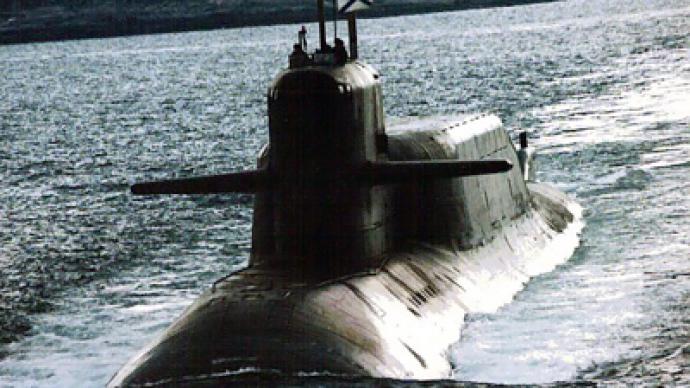New submarine supermissile can pierce ABM shield

The new Russian liquid-fuel Liner missile is world’s most advanced submarine-based strategic weapon with range and payload capabilities surpassing every model deployed by any other country, its developer says.
The submarine-launched ballistic missile (SLBM) Liner can carry up to 12 low-yield MIRV nuclear warheads and has a payload/mass ratio surpassing any solid-fuel strategic missiles designed by the US, UK, France and China, the developer Makeyev State Rocket Center said in a statement. It is very flexible in terms of what its payload can be, varying and mixing warheads of different capabilities.The design bureau believes that the missile, which was first tested on May 20, will ensure the use of Delta IV class submarines until at least 2030.There are seven vessels of this class in the Russian Navy, and they are armed with the SLMBs Sineva. The Liner is a highly advanced version of the Sineva missile.There is little further detail about the Liner’s specifications so far. Sineva is a three-stage ballistic missile. It has a reported operational range of almost 12,000 kilometers, listed throw-weigh of 2.8 tonnes and can be launched from up to 55 meters deep.Russia is the only nation that uses liquid-fuel submarine-based nuclear missiles. All other nations deploying SLBMs opt for solid propellants, since they allow for the building of more reliable missiles, which are simpler and cheaper to operate.Russia has a solid-fuel SLBM in development too. The Bulava missile, which is the designated armament for the advanced Borey-class submarines, has seen several delays and setbacks over the years, but now it is slated to enter service after a series of successful test fires in 2010-2011.Military experts say there is a certain competition between the two design approaches, but each has its own niche in the Russian Navy.“The Bulava, which is similar to the American Trident II missile, is not able to replace the heavy liquid-fuel missile Sineva and its advanced version, the Liner. Only such heavy liquid-fuel missiles are capable of throwing big payloads to very long ranges,” military analyst Igor Khokhlov told RT.The use of such missiles is necessary due to specifics of the missions,which the Russian Navy has to carry out, as well as its structure and nature, the expert says. Historically, Russia has perceived a land invasion as the primary military threat, while the Navy’s task was to protect the coastline rather than serve as an attack force. Liquid-fuel missiles are part of this force and will remain an integral part of Russia’s nuclear deterrence for at least several decades to come.“Submarines armed with such missiles can operate from Russia’s safe territorial waters, where they are covered by the Russian Air Force and its surface Navy. They can also have electronic equipment, necessary to suppress the US antiballistic missile system, as part of their payload in addition to the warheads themselves,” Igor Khokhlov from the Institute of World Economy and International Relations explained.Building heavy liquid-fuel SLBMs is a scientific and engineering task, which only Russia can carry out at the moment, Khokhlov added. No other technology can provide similar capabilities now, unless an unexpected sudden breakthrough happens.












